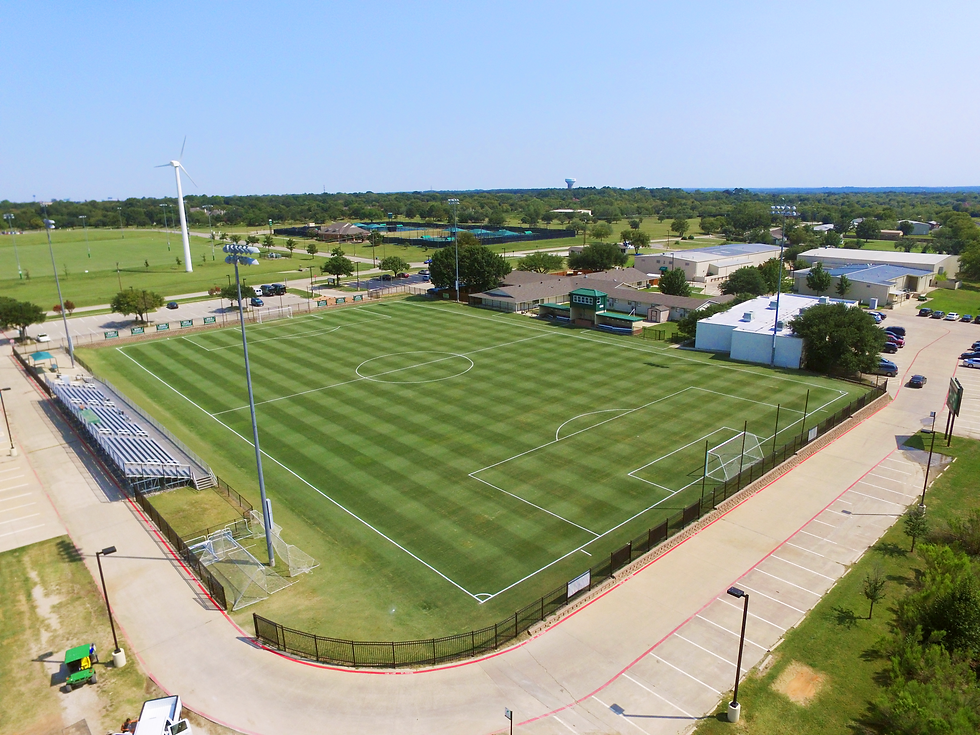After the trophies are hoisted, celebrations finish, and the lights shut off, the most important thing about a sporting event is that every player that started the game, finished the game with no injuries. We tend to take that for granted. While there are a good amount of injuries in sports, the vast majority of participants are unharmed and are able to enjoy its benefits.
Outside of human-to-human contact, the most influential factor in sports injuries is the playing surface. The playing surface affects injuries in several ways. From how hard the ground is when we land, to how soft it is when we go to plant a foot and pivot. If you are playing on a poor-quality field, your risk of injury greatly increases, regardless of if it’s natural or synthetic.
Natural
Natural fields can have a wide variety of playable conditions. It can be muddy, hard and dry, slippery, perfect, and everything in between. Most fields also get played on through those conditions, which makes the field play even worse next time. The tough part of maintaining natural fields is keeping them in that “perfect” range. In this range, injuries are reduced and it’s when the field looks the best. While that doesn’t sound too bad, keeping a field in a safe, playable, and aesthetically pleasing condition is very time-consuming, and requires a significant investment of resources.
When a natural field is maintained well, it doesn’t have to be professional-level, but at least has a field maintenance standard, the human body, and the surface are playing their own game. When someone hits a natural field surface, the 6-12” of rootzone absorbs the force and disperses it through the soil, so as to not bounce back up to the body/head, causing injury. With a healthy natural field, the grass should also be very dense and able to once again act as a shock absorber, dissipating the force/energy. The previous section was referring to vertical force. Where natural fields shine the most is with horizontal, or a side-to-side/torquing, force. This is when a player plants their foot, pivots the ankle and turns their knee. The grass and soil should be tough enough to withstand normal wear and tear but are “weak” enough to “give out” when enough force has been applied. So when that player makes a cut and his energy releases through the grass tearing or giving way, instead of through the knee, we can thank the Sports Field Manager for properly maintaining the field and keeping the safety of the athletes in mind.
One issue natural fields face is when they are poorly maintained, which can be easy to do. So a field that gets a lot of use but isn’t being maintained at a high enough level, injuries spike, and at levels probably much higher than poorly maintained synthetic fields. Natural fields’ margin for error, as well as their margin for great playability, is much smaller than synthetics. The worst-maintained synthetic field still plays significantly better than the worst-maintained natural field (I’m not sure I want to win that trophy!). Although bad hops, twisted ankles, sliding, etc. are all common injuries from poorly maintained natural fields.
Synthetic
Synthetic fields fill a void that natural fields leave with athletes and coaches. This is mainly because of the lack of rainouts, but also because they can have great-looking fields, year-round, with less maintenance than a natural field. While this is true, synthetic fields do have fewer rainouts, look great year-round, and require less maintenance, but they still have issues with health and safety that should be addressed.
One of the few positives of synthetic fields, when it comes to health and safety, is the infill material and shock pad. These have greatly reduced the hardness of new synthetic fields over the last 5-10 years and will only continue to get better in the years to come. Updated fibers, infill, backing, and pads, as well as more widely-available safety field testing, have all contributed to better safety ratings recently, compared to natural and synthetic.
That’s fantastic and absolutely necessary. I hope they continue to improve synthetic’s safety ratings, but there are still glaring concerns. Continued issues with concussions, high field temperature, and lower-leg injuries have plagued synthetic fields since they were created. This seems to get the most attention because a handful of very high-level football players have sustained significant injuries, seemingly, because it was a synthetic field.
Energy dissipation is the name of the game when it comes to concussions and really any contact and field-related injuries. If you have the ability to manipulate the softness/hardness of your field more precisely, you can help to alleviate injuries. It use to be very difficult to adjust the hardness of a synthetic field, which is why natural was always the safety champion. Although now with new infill systems, updated equipment offerings, and the availability of maintenance contractors, field managers can greatly influence the safety and playability, for better or worse, of synthetic fields.
Conclusion
While in this writer’s opinion, a highly maintained natural field is still the best field to play on (aesthetically and safely), synthetic fields have come a very long way in the past decade or two. It will not be long, maybe 5-10 years, before we start seeing synthetic fields have better safety ratings than natural ones. There will always be natural fields, and always be synthetic fields. There is no right or wrong, but just information. Find the “right” information and apply it to your situation as best as possible. Some will be natural, and some will be synthetic, but at least we are still playing sports either way!
.png)
Comments